I photographed these White-tailed Deer does with a fawn last June at Reeve’s Slough, which is part of Sequoyah National Wildlife Refuge in Oklahoma.
I didn’t have my camera gear with me so my dear friend, Steve Creek, graciously loaned me his Canon R7 and his 100-500mm lens. These deer photos were taken on my second day of using his Canon gear and my first trip to this refuge.
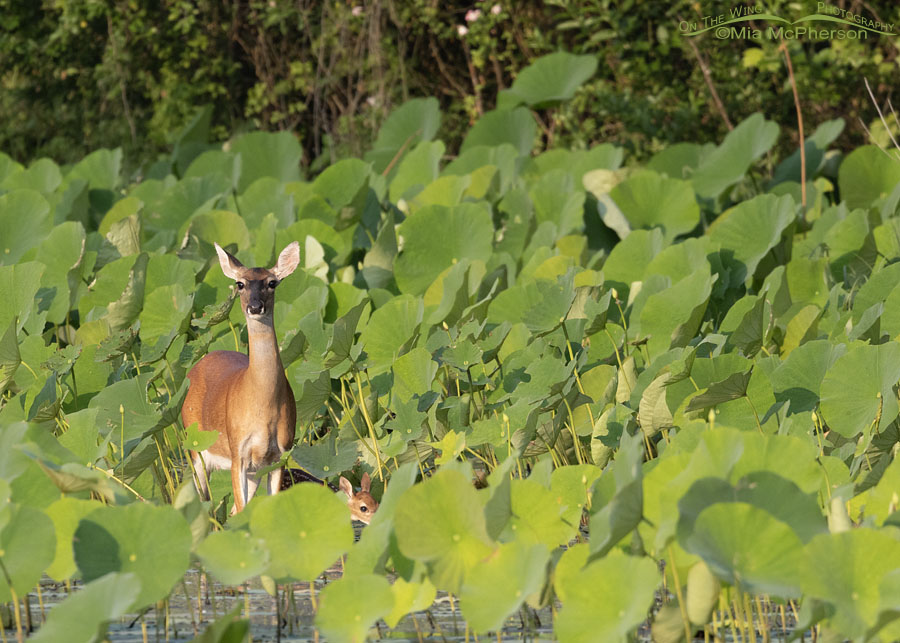 White-tailed Deer doe and fawn in lotuses – Canon R7, f7.1, 1/800, ISO 800, Canon RF 100-500 mm at 500m, natural light
White-tailed Deer doe and fawn in lotuses – Canon R7, f7.1, 1/800, ISO 800, Canon RF 100-500 mm at 500m, natural light
When I walked down to the edge of the slough and saw the deer, I called out to Steve, who was in the parking area, and told him about the does and the fawn. There was no disguising the joy in my voice, it bubbled out like clear water from an underground spring!
The adorable baby deer was hard to see through the large lotus leaves at times, but just catching a peek of that spotted fawn made me do a happy dance. The does watched the fawn carefully as it learned to use its legs.
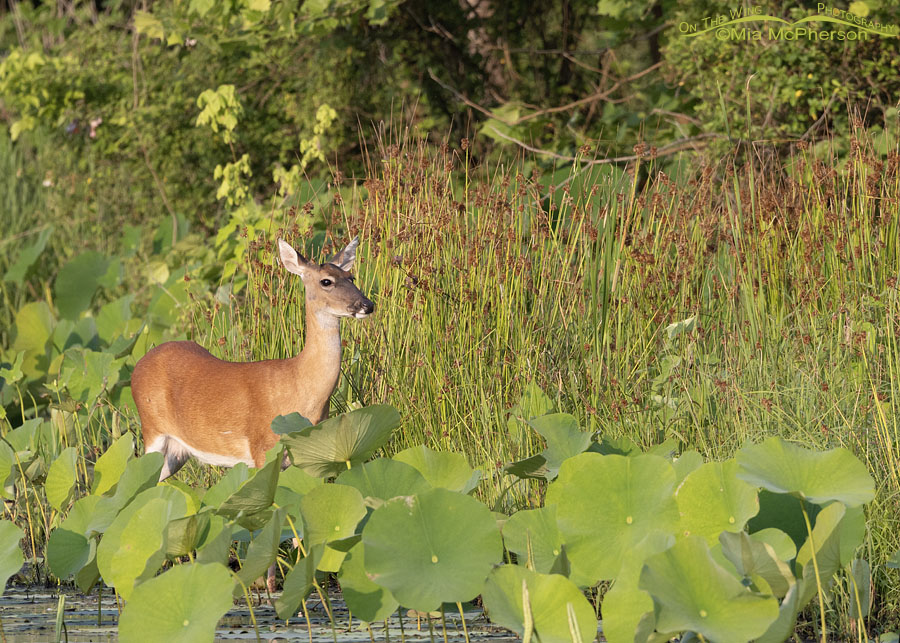 White-tailed Deer doe at Reeve’s Slough – Canon R7, f6.3, 1/800, ISO 640, Canon RF 100-500 mm at 428m, natural light
White-tailed Deer doe at Reeve’s Slough – Canon R7, f6.3, 1/800, ISO 640, Canon RF 100-500 mm at 428m, natural light
As Steve and I stood side by side on the dock at the slough, the does grazed on the lotus leaves while the fawn had a case of the zoomies among the lotuses.
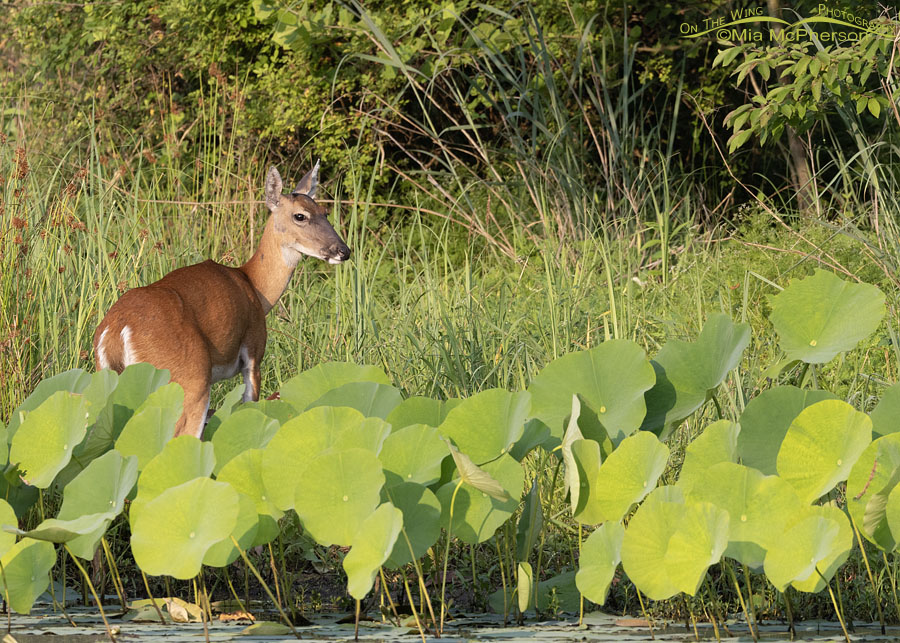 Doe White-tailed Deer in lotus leaves – Canon R7, f6.3, 1/800, ISO 6400, Canon RF 100-500 mm at 428m, natural light
Doe White-tailed Deer in lotus leaves – Canon R7, f6.3, 1/800, ISO 6400, Canon RF 100-500 mm at 428m, natural light
White-tailed deer aren’t found in Utah, so I was thrilled to have seen them in Oklahoma and Arkansas. Seeing a fawn was even better!
The does and fawn were on the other side of the slough, and even though they knew we were there, they kept on feeding with a few occasional glances in our direction.
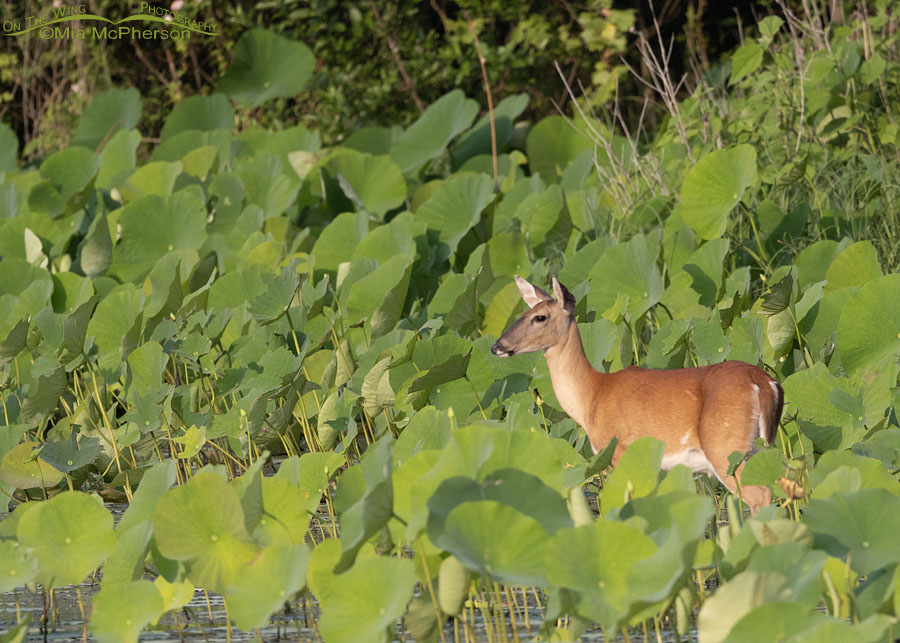 White-tailed Deer doe at the edge of Reeve’s Slough – Canon R7, f7.1, 1/800, ISO 640, Canon RF 100-500 mm at 500m, natural light
White-tailed Deer doe at the edge of Reeve’s Slough – Canon R7, f7.1, 1/800, ISO 640, Canon RF 100-500 mm at 500m, natural light
Reeve’s Slough is covered in lotuses during the growing season, with a few water lilies mixed in. The vegetation at the edge of the water is lush and vibrantly green.
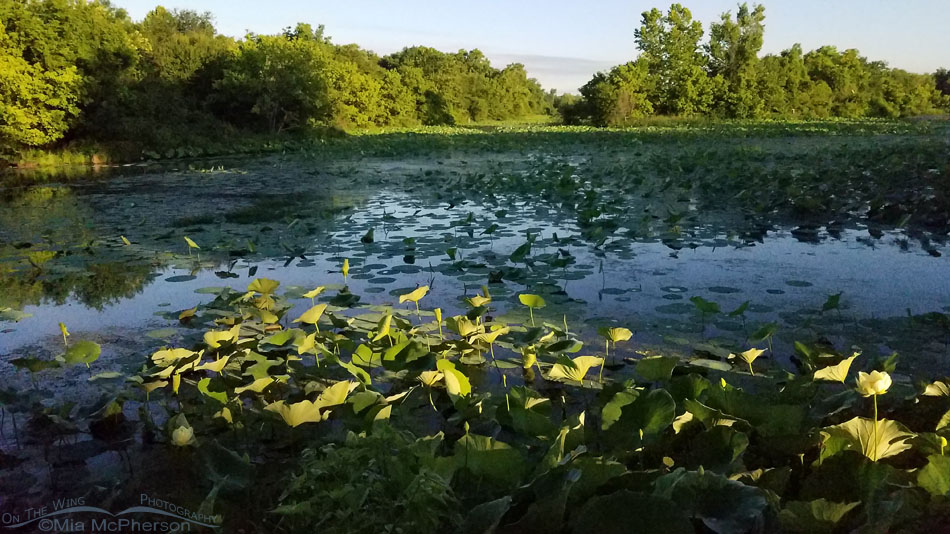 Morning light on Reeve’s Slough in June – Samsung cell phone photo
Morning light on Reeve’s Slough in June – Samsung cell phone photo
There is plenty for the whitetails to eat in the area and there was even more for my eyes to feast upon. It felt peaceful just being there.
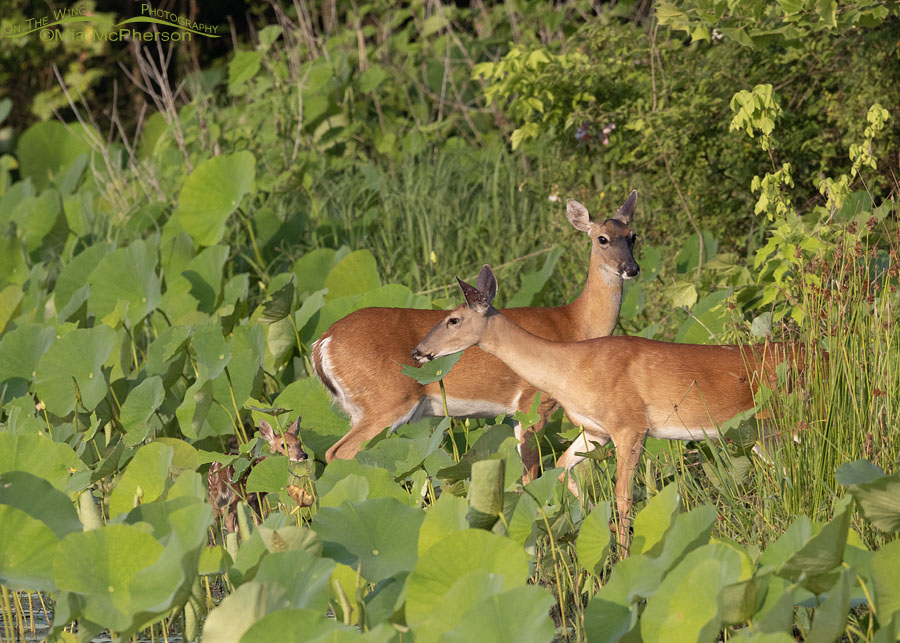 White-tailed Deer does with a fawn at Sequoyah NWR – Canon R7, f8, 1/800, ISO 800, Canon RF 100-500 mm at 500m, natural light
White-tailed Deer does with a fawn at Sequoyah NWR – Canon R7, f8, 1/800, ISO 800, Canon RF 100-500 mm at 500m, natural light
All the greenery did make it challenging to get clear photos of the young, spotted fawn. My glimpses of it were truly delightful, though. Having these deer in my viewfinder brought me much joy.
I’ve learned that Reeve’s Slough looks much different once the growing season ends and the lotus leaves disappear under the water. Steve’s photos and videos of White-tailed Deer at this slough during other times of the year are simply wonderful. Visit his site to view and listen to his videos, learn more about the deer, and see his photos. You will love them, I promise. I’ve linked to his White-tailed Deer posts here, enjoy! The videos make me feel as if I am at the refuge again.
Life is good.
Mia
Click here to see more of my White-tailed Deer photo plus facts and information about this species.


Magnificent pics. The WTD are absolutely beautiful and the fawn tops it off. I’m sure Felix Salten is smiling right now . Thanks Mia.
What a delight! Thank you for sharing these baby pictures! We had a salt lick not far from our house when we lived in the mountains. It was such fun to watch the deer take advantage of it — especially with their young fawns.
Wow those are nice pictures of the White tailed Deer. They are longer looking than those in the BigHorn, Mts of Wyoming. The flowers are pretty darn tall in the pond area and lovely.
Lovely photos, Mia
Really beautiful. I wonder what predators are there to control these darling deer?
Mary, there are bobcats and coyotes at the refuge, the coyotes probably do more to control the deer population than the bobcats.